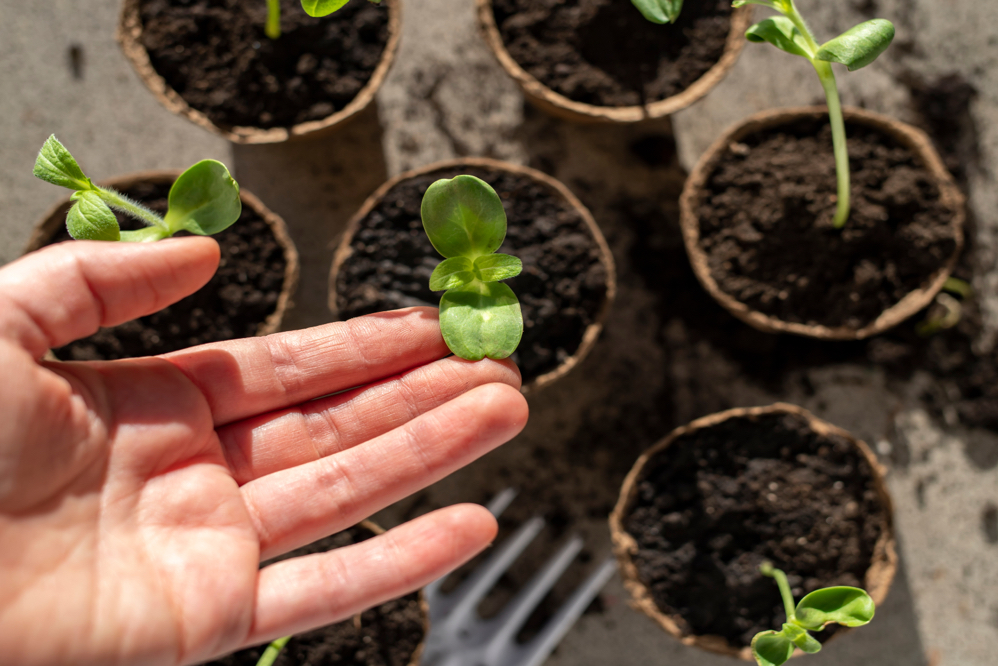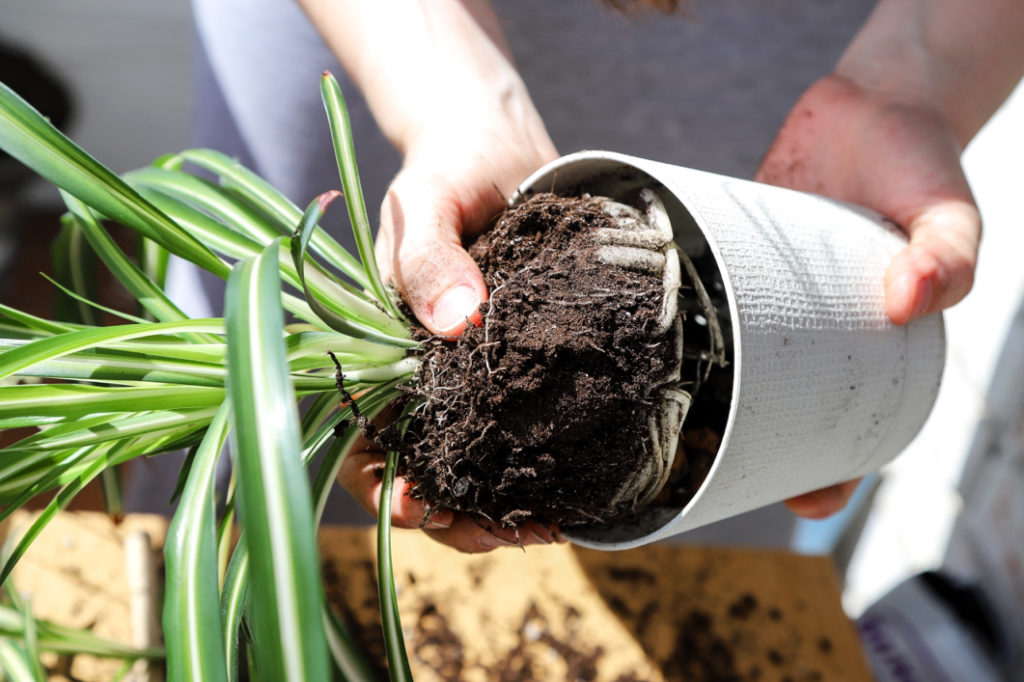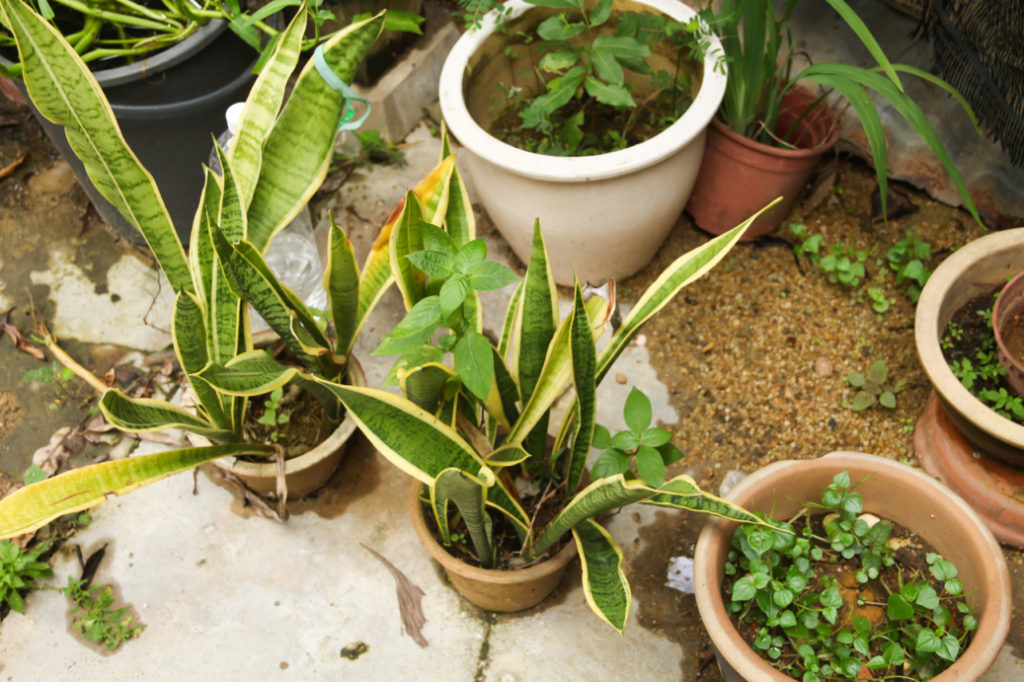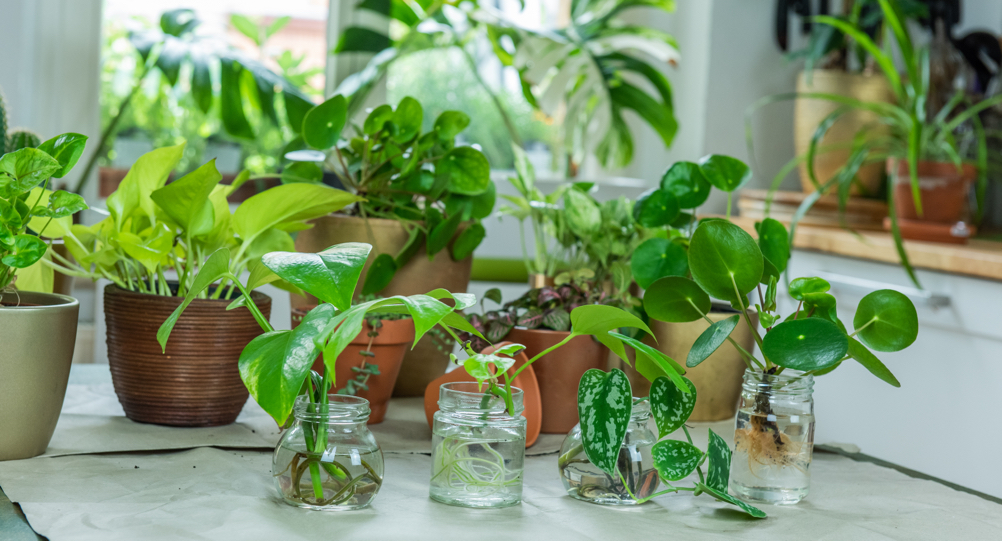Harriet Thompson Shares Her Secret To Bottom Watering For Potted Plants


Elizabeth is a Permaculture Garden Designer, Sustainability Consultant and Professional Writer, working as an advocate for positive change. She graduated from the University of St. Andrews with an MA in English and Philosophy and obtained a Diploma in Applied Permaculture Design from the Permaculture Association.
Reviewed By COLIN SKELLY

Colin is a Horticulturist and Horticultural Consultant with experience in a range of practical and managerial roles across heritage, commercial and public horticulture. He holds the Royal Horticultural Society’s Master of Horticulture award and has a particular interest in horticultural ecology and naturalistic planting for habitat and climate resilience.
Contributions From HARRIET THOMPSON

Harriet is the founder of Harriet’s Plants, a peat-free houseplant nursery based in Staffordshire. She studied Plant Science at The Eden Project in Cornwall and is particularly passionate about sustainable growth.

Simon Lycett is one of the UK’s most highly sought-after Florists, designing arrangements for Royal Weddings and other highly prestigious events in the country. He is an RHS Floristry Ambassador, author of ‘The Flower Market Year’ and has appeared on several TV and Radio shows. Currently, he is the Host of Channel 4’s Full Bloom.
Bottom watering is a good idea for many potted plants, but if you are unsure about what this means and what it entails, this simple guide should help.
Watering is one area where those new to growing potted plants often get things wrong; some experienced gardeners may even over or under water.
Bottom watering is one way to avoid over or under-watering.
“When watering houseplants in my home, I find bottom watering to be the most successful,” says Harriet Thompson, owner of Harriet’s Plants, an environmentally friendly houseplant nursery based in Lichfield, UK.
“It is a great technique, especially if you are a beginner.”
It can often help you make sure that your plants get exactly the amount of water they require – no more or no less.
What Is Bottom Watering?

Bottom watering involves providing water from below, rather than pouring water from above.
To provide water from below, you simply place your potted plant in water and let it sit there and soak up the water it needs.
The water will be drawn up through the holes in the base of the pot, drawn upwards through the soil by capillary action, and taken up by plant roots.1Capillary Action and Water. (2019, October 22). USGS. Retrieved March 13, 2023, from https://www.usgs.gov/special-topics/water-science-school/science/capillary-action-and-water

The water will wick upwards through the growing medium, eventually reaching just below the surface.
The idea is to check with a finger to see whether the soil just below the surface is wet.
Once it is, you can simply remove the pot from the water-filled container and place it back into its regular position on a catchment tray or saucer.
“Get a watering system, because the easiest way for your flowers to thrive and flourish is if they get regular watering and feeding, otherwise you become a slave to the weather,” says Simon Lycett, an award-winning Florist.
“You can fit it yourself and they are not expensive! If you can’t do this, bottom watering is great.”
Why Bottom Watering Is A Good Idea
When you water from above, it is very easy to find that you overwater or underwater.
You may find that water does not fully moisten the growing medium and that there are still dry areas within your pot.
It might also be the case that too much water is added and certain areas become waterlogged and compacted, which can cause problems like root rot.
“Monitoring water within houseplants is key, so I encourage bottom watering during the growing months to get the most out of your indoor plants,” says Harriet.

Another issue that can arise when watering from above is that water can splash on the leaves.
Water on the leaves of certain potted plants can also increase the likelihood of certain fungal diseases.
“For plants such as succulents, particularly in the winter months, water can gather in the rosettes resulting in a risk of rotting,” explains Horticultural Consultant Colin Skelly.
“Watering from below overcomes this, allowing moistening of the soil but minimising humidity around the plant.”

When you water from below, the soil and roots will have ‘sucked up’ just the amount of water that is required, leaving any excess in the container below.
The plant leaves will not be wetted, but their roots should have access to moisture within the medium, and be able to obtain the water and nutrients they need.
Another benefit of regular bottom watering is that plant roots will tend to grow healthily and strongly as they grow down towards the water source.
Tips For Bottom Watering
The key thing to remember when bottom watering is that you should check on the plants sitting in water frequently, and remove them from the water container once the upper layers of the growing medium are sufficiently moist.
Leaving the plants standing in water for too long may cause water-logging issues.
Though bottom watering does give you more control, it is still possible to overwater when bottom watering if you leave your potted plants in water for too long.

Exactly how long you should let your plant sit in the water depends on the size of the plant and the size of the pot, and also on how dry the growing medium is when you place it in the water.
Checking the medium by sticking a finger in the top after around 10 minutes is usually a good idea.
After that, you can check periodically until you can feel moisture.
Over time, you may also begin to be able to gauge how much water has been absorbed by the weight of the pot.
“No two houseplants are the same,” states Harriet.
“Bear this in mind when watering and treat each plant as an individual.
“Don’t water on a regular schedule. Instead, water when your plant actually needs it and check regularly!”

As a general rule of thumb, small plants should typically require around 20-30 minutes in water, though larger plants in bigger pots could require an hour or even longer.2Nguyen, K. (2022, January 26). This Simple Trick Keeps You From Overwatering Your Houseplants. Brightly. Retrieved March 13, 2023, from https://brightly.eco/blog/bottom-watering-plants-tips
Be sure not to forget about your plants while they are sitting in a container of water.
Is It Always The Right Option?
Bottom watering will work for all potted plants.
The only thing to watch out for is compacted soil; if the growing medium in your pots is too compact, it will not be able to draw up water as effectively.
However, some plants respond better to bottom watering than others.

The problem is, if you only water from below, this can cause salt and mineral build-up.
Some plants can be particularly sensitive to this and may suffer and fail to thrive where this occurs.
The good news is that, for most potted plants, you can bottom water most of the time, and flush out by watering from above periodically, perhaps once a month or so.

That means that you can gain the benefits of bottom watering without worrying too much about salt and mineral build-up.
While bottom watering can be beneficial, for the reasons mentioned above, it is worth noting that it will take more time.
This is one downside to this type of watering.
However, for most plants, with the exception of certain sensitive plants as mentioned above, regular bottom watering with occasional top watering is the best idea.
References
- 1Capillary Action and Water. (2019, October 22). USGS. Retrieved March 13, 2023, from https://www.usgs.gov/special-topics/water-science-school/science/capillary-action-and-water
- 2Nguyen, K. (2022, January 26). This Simple Trick Keeps You From Overwatering Your Houseplants. Brightly. Retrieved March 13, 2023, from https://brightly.eco/blog/bottom-watering-plants-tips
